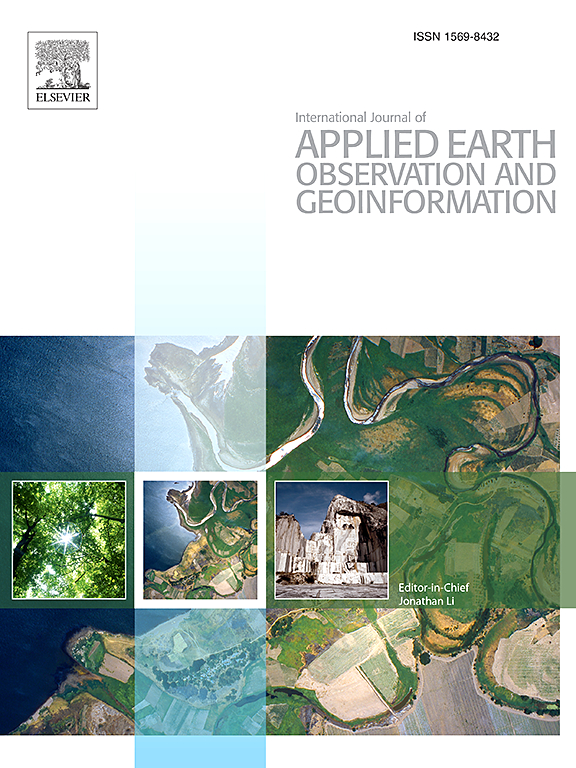Recovery of pixels with extremely turbid waters and intensive floating algae from false cloud masking in satellite ocean color remote sensing
IF 7.6
Q1 REMOTE SENSING
International journal of applied earth observation and geoinformation : ITC journal
Pub Date : 2025-02-17
DOI:10.1016/j.jag.2025.104408
引用次数: 0
Abstract
We describe our work to improve the cloud masking for satellite ocean color data processing over extremely turbid waters and intensive algae blooms (or floating algae), which are often identified as cloud mistakenly. An improved cloud masking approach is proposed using additional information of the Alternate Floating Algae Index (AFAI) and a new normalized AFAI (nAFAI), as well as ratios of the Rayleigh-corrected reflectance ε(RC)(λi, λj) from the blue and near-infrared bands. Specifically, the proposed algorithm adds a recovery procedure after the original cloud masking to retrieve falsely masked pixels and identifies these pixels as turbid waters, floating algae or absorbing aerosols, from which ocean color products can be further derived. The new cloud masking algorithm has been implemented in the NOAA Multi-Sensor Level-1 to Level-2 (MSL12) ocean color data processing system for routine global data processing for various satellite ocean color sensors, e.g., the Visible Infrared Imaging Radiometer Suite (VIIRS), the Ocean and Land Colour Instrument (OLCI), the Geostationary Ocean Color Imager (GOCI), etc. Results show that the new cloud masking has remarkably improved ocean color data coverage, particularly over highly turbid coastal and inland waters, as well as intensive floating algae, eliminating almost all false cloud pixels. For example, using the new cloud masking algorithm, the falsely masked pixels are recovered, reducing cloud masking pixels by ∼30–40% and ∼40–50% over highly turbid China East Coast and China’s Lake Taihu, respectively.
求助全文
约1分钟内获得全文
求助全文
来源期刊

International journal of applied earth observation and geoinformation : ITC journal
Global and Planetary Change, Management, Monitoring, Policy and Law, Earth-Surface Processes, Computers in Earth Sciences
CiteScore
12.00
自引率
0.00%
发文量
0
审稿时长
77 days
期刊介绍:
The International Journal of Applied Earth Observation and Geoinformation publishes original papers that utilize earth observation data for natural resource and environmental inventory and management. These data primarily originate from remote sensing platforms, including satellites and aircraft, supplemented by surface and subsurface measurements. Addressing natural resources such as forests, agricultural land, soils, and water, as well as environmental concerns like biodiversity, land degradation, and hazards, the journal explores conceptual and data-driven approaches. It covers geoinformation themes like capturing, databasing, visualization, interpretation, data quality, and spatial uncertainty.
 求助内容:
求助内容: 应助结果提醒方式:
应助结果提醒方式:


